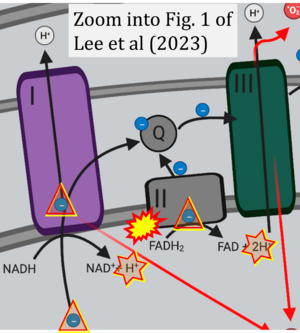Lee 2023 Antioxidants (Basel)
| Lee WE, Genetzakis E, Figtree GA (2023) Novel strategies in the early detection and treatment of endothelial cell-specific mitochondrial dysfunction in coronary artery disease. Antioxidants (Basel) 12:1359. https://doi.org/10.3390/antiox12071359 |
Lee WE, Genetzakis E, Figtree GA (2023) Antioxidants (Basel)
Abstract: Although elevated cholesterol and other recognised cardiovascular risk factors are important in the development of coronary artery disease (CAD) and heart attack, the susceptibility of humans to this fatal process is distinct from other animals. Mitochondrial dysfunction of cells in the arterial wall, particularly the endothelium, has been strongly implicated in the pathogenesis of CAD. In this manuscript, we review the established evidence and mechanisms in detail and explore the potential opportunities arising from analysing mitochondrial function in patient-derived cells such as endothelial colony-forming cells easily cultured from venous blood. We discuss how emerging technology and knowledge may allow us to measure mitochondrial dysfunction as a potential biomarker for diagnosis and risk management. We also discuss the "pros and cons" of animal models of atherosclerosis, and how patient-derived cell models may provide opportunities to develop novel therapies relevant for humans. Finally, we review several targets that potentially alleviate mitochondrial dysfunction working both via direct and indirect mechanisms and evaluate the effect of several classes of compounds in the cardiovascular context.
• Bioblast editor: Gnaiger E
Correction: FADH2 and Complex II
- FADH2 is shown as the substrate feeding electrons into Complex II (CII). This is wrong and requires correction - for details see Gnaiger (2024).
- Gnaiger E (2024) Complex II ambiguities ― FADH2 in the electron transfer system. J Biol Chem 300:105470. https://doi.org/10.1016/j.jbc.2023.105470 - »Bioblast link«
Hydrogen ion ambiguities in the electron transfer system
Communicated by Gnaiger E (2023-10-08) last update 2023-11-10
- Electron (e-) transfer linked to hydrogen ion (hydron; H+) transfer is a fundamental concept in the field of bioenergetics, critical for understanding redox-coupled energy transformations.
- However, the current literature contains inconsistencies regarding H+ formation on the negative side of bioenergetic membranes, such as the matrix side of the mitochondrial inner membrane, when NADH is oxidized during oxidative phosphorylation (OXPHOS). Ambiguities arise when examining the oxidation of NADH by respiratory Complex I or succinate by Complex II.
- Oxidation of NADH or succinate involves a two-electron transfer of 2{H++e-} to FMN or FAD, respectively. Figures indicating a single electron e- transferred from NADH or succinate lack accuracy.
- The oxidized NAD+ is distinguished from NAD indicating nicotinamide adenine dinucleotide independent of oxidation state.
- NADH + H+ → NAD+ +2{H++e-} is the oxidation half-reaction in this H+-linked electron transfer represented as 2{H++e-} (Gnaiger 2023). Putative H+ formation shown as NADH → NAD+ + H+ conflicts with chemiosmotic coupling stoichiometries between H+ translocation across the coupling membrane and electron transfer to oxygen. Ensuring clarity in this complex field is imperative to tackle the apparent ambiguity crisis and prevent confusion, particularly in light of the increasing number of interdisciplinary publications on bioenergetics concerning diagnostic and clinical applications of OXPHOS analysis.
- Fig. 1 of Lee et al (2023): Does the electron flowing through CI not come from NADH (there should be 2e-), but from somewhere else in the matrix?




